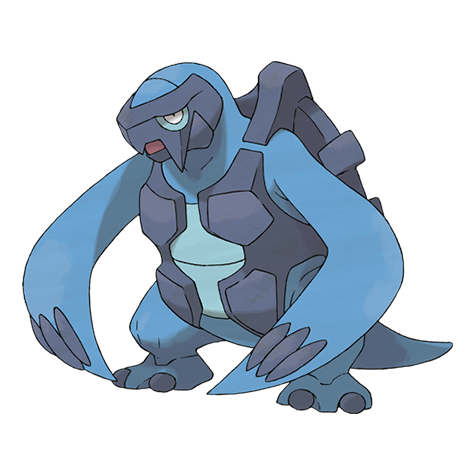Carracosta Species
Attributes
- Base Happiness: 70
- Capture Rate: 45
- Color: Blue
- Egg Groups:
Water1
,
Water3
- Gender Rate: 1
- Hatch Counter: 30
- Has Gender Differences: False
- Is Baby: False
- Is Legendary: False
- Is Mythical: False
- Shape: Upright
- Generation: Generation-V
Carracosta Varieties

#565
Carracosta
Types: Water, Rock
Flavor Text Entries
-
Black: They can live both in the ocean and on land. A slap from one of them is enough to open a hole in the bottom of a tanker.
-
White: Incredible jaw strength enables them to chew up steel beams and rocks along with their prey.
-
Black-2: It could knock out a foe with a slap from one of its developed front appendages and chew it up, shell or bones and all.
-
White-2: It could knock out a foe with a slap from one of its developed front appendages and chew it up, shell or bones and all.
-
X: They can live both in the ocean and on land. A slap from one of them is enough to open a hole in the bottom of a tanker.
-
Y: It could knock out a foe with a slap from one of its developed front appendages and chew it up, shell or bones and all.
-
Omega-Ruby: They can live both in the ocean and on land. A slap from one of them is enough to open a hole in the bottom of a tanker.
-
Alpha-Sapphire: It could knock out a foe with a slap from one of its developed front appendages and chew it up, shell or bones and all.
-
Sun: It constructed its sturdy shell by crunching and swallowing the hard shells or bones of its prey.
-
Moon: Active both on land and in the sea, this Pokémon drags its land-based prey into the water to finish it off.
-
Ultra-Sun: Its jaws are terrifyingly powerful. It could eat Omastar and Omanyte whole and not be bothered in the slightest by their shells.
-
Ultra-Moon: Carracosta eats every last bit of the prey it catches, even the shells and bones, to further strengthen its sturdy shell.
-
Sword: Carracosta completely devours its prey—bones, shells, and all. Because of this, Carracosta’s own shell grows thick and sturdy.
-
Shield: This Pokémon emerges from the water in search of prey despite the fact that it moves more slowly on land.